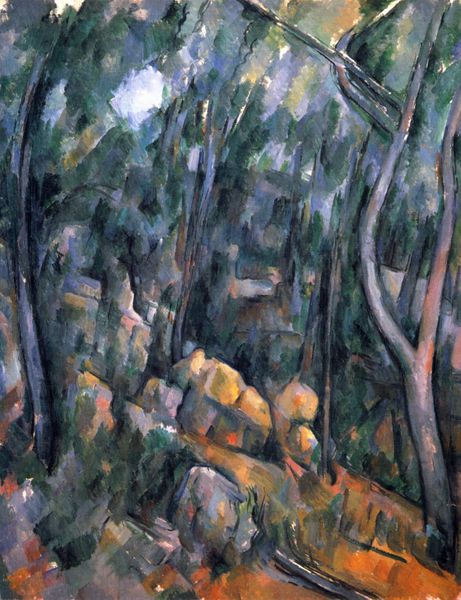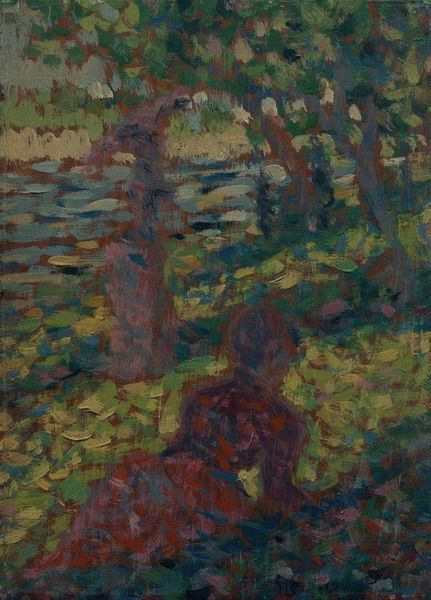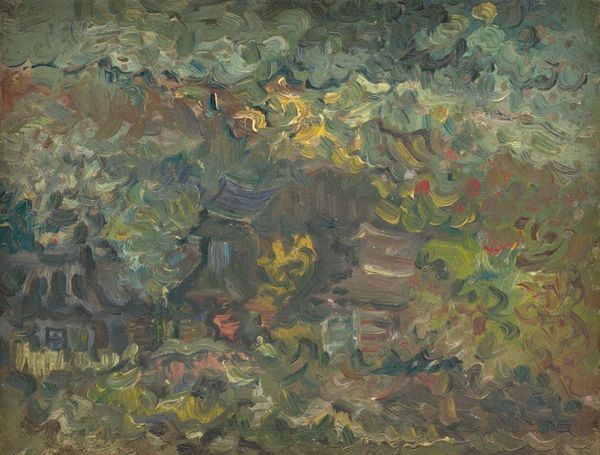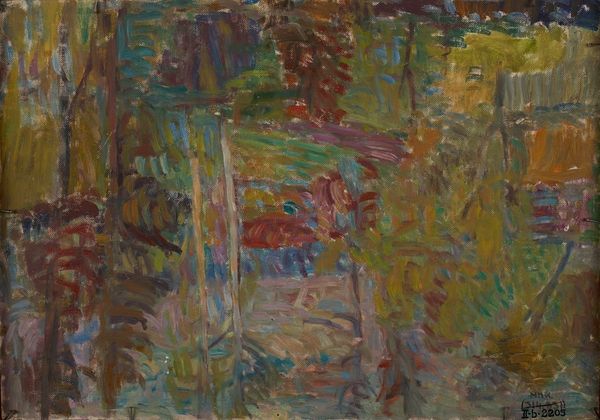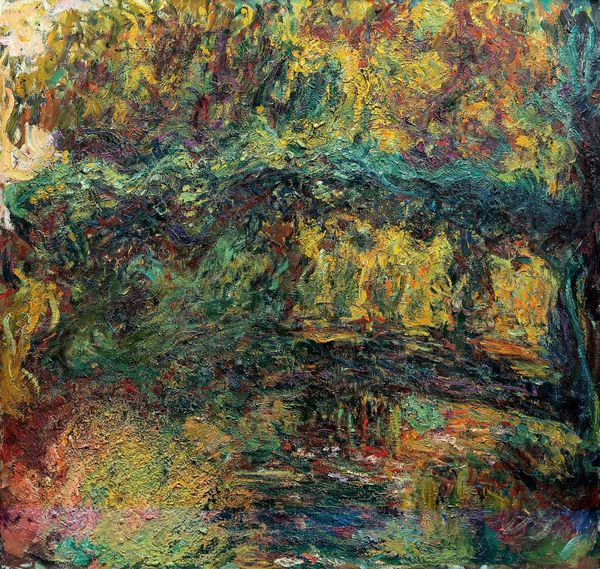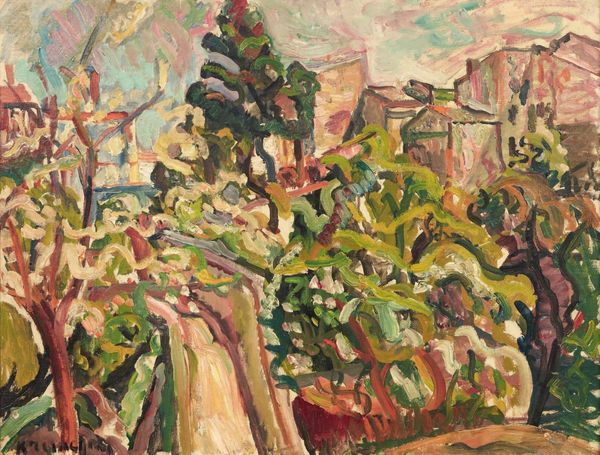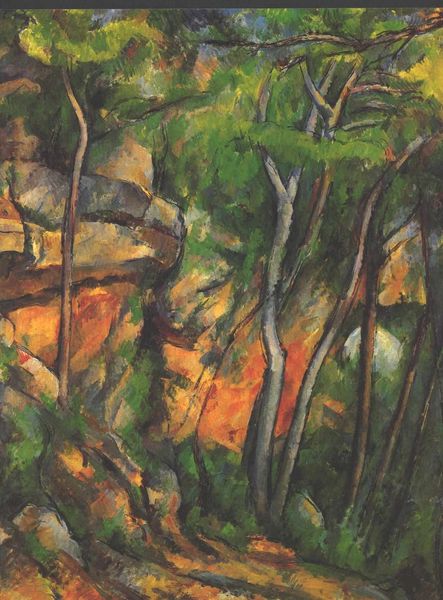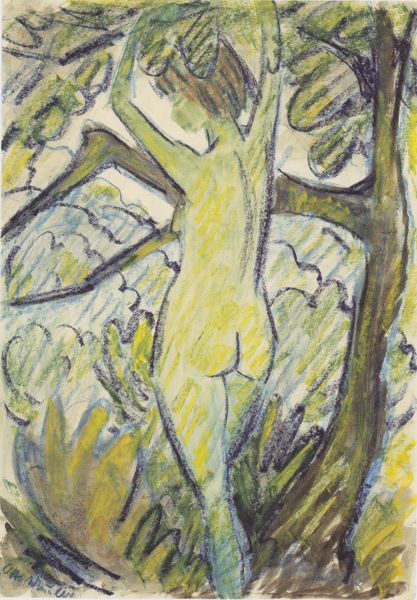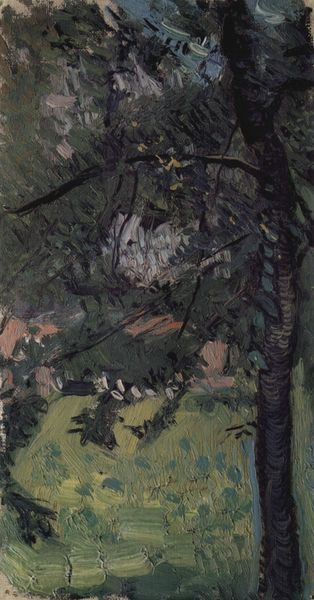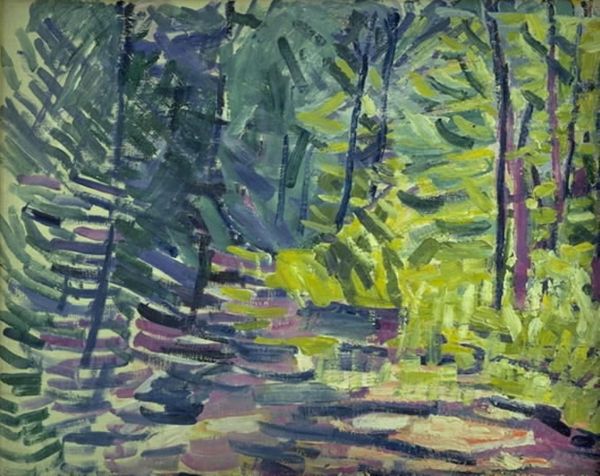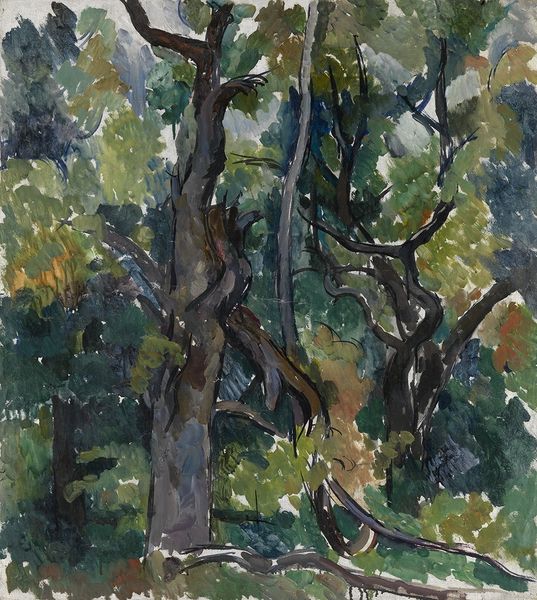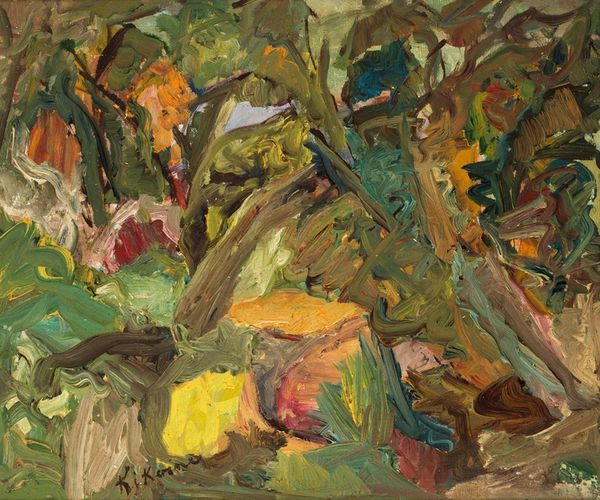
painting, oil-paint
#
painting
#
oil-paint
#
landscape
#
form
#
geometric
#
post-impressionism
Copyright: Public Domain: Artvee
Curator: We're looking at Paul Cézanne's oil on canvas from between 1895 and 1904, entitled "Rochers et branches à Bibémus," meaning "Rocks and Branches at Bibemus." Art Historian: Immediately I'm drawn to this dense, almost geological feel. The earth tones dominate, a blend of ochre and greens that suggest a landscape holding secrets, a place both comforting and somewhat imposing. Curator: Absolutely. Bibémus Quarry, near Aix-en-Provence, where Cézanne painted this, was not just a landscape, but a site of intense political significance during industrialization. These ochre quarries were a contentious space, representing exploited labor and the extraction of resources. Art Historian: I see what you mean; the image definitely speaks to the idea of nature bearing witness. The geometric shapes create a sense of solidity. The quarry itself, with its forceful structure and fragmented look, takes on a near-symbolic character. Almost totemic. Curator: Precisely, these shapes reflect Cézanne’s broader artistic project – his push towards a visual language that explored form as its primary subject. He was quoted saying that, in nature, he saw everything “according to the cone, the sphere, and the cylinder." These elements here symbolize the beginning of something radically new in art history. Art Historian: I am also captured by the color palette Cézanne adopts. There is a strong resonance with ancient frescos, artworks that sought to imbue space with deep meaning using available earthly pigments. It feels both immediate and very, very old. Curator: And the fragmentation we see might echo contemporary socio-political disruptions. This area of France was very involved in workers’ movements in response to exploitation during Cézanne’s time, these rock formations, therefore, might also symbolize social and economic upheaval. Art Historian: Considering that brings new depth to these ochre surfaces. They could symbolize endurance and hardship but also permanence and cultural memory in this landscape. Curator: Viewing art through different lenses truly gives insight, it helps uncover hidden meanings, societal and environmental contexts, or different iconographic interpretations of these artistic treasures. Art Historian: Indeed. Art holds more than beauty – art serves as an essential repository for humanity's shared symbols and collective experiences.
Comments
No comments
Be the first to comment and join the conversation on the ultimate creative platform.
